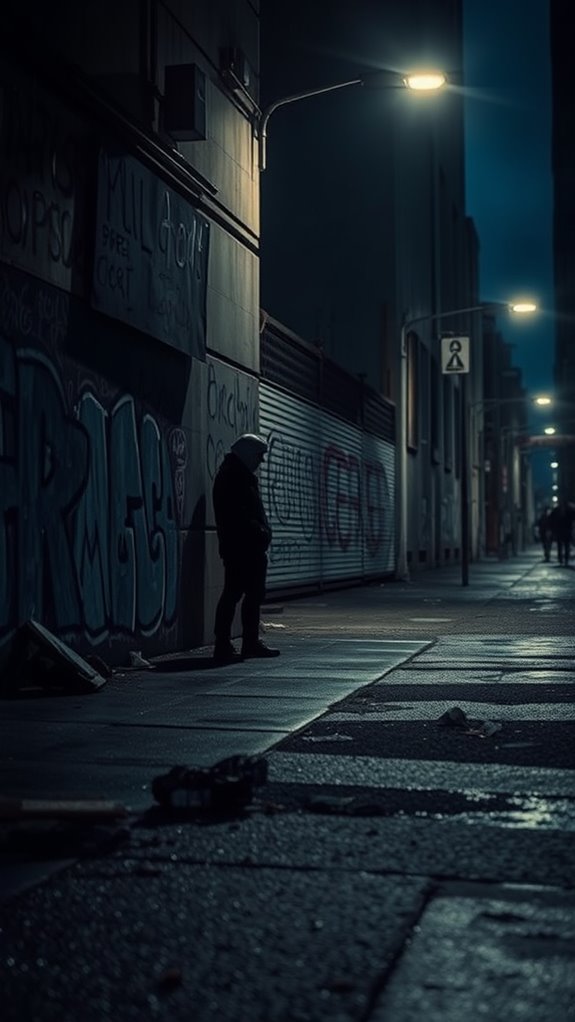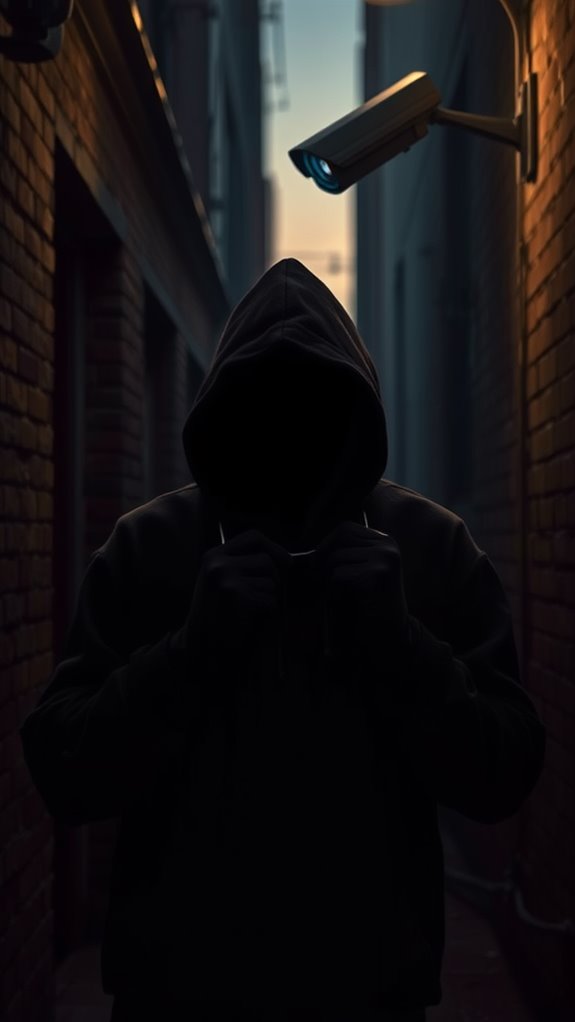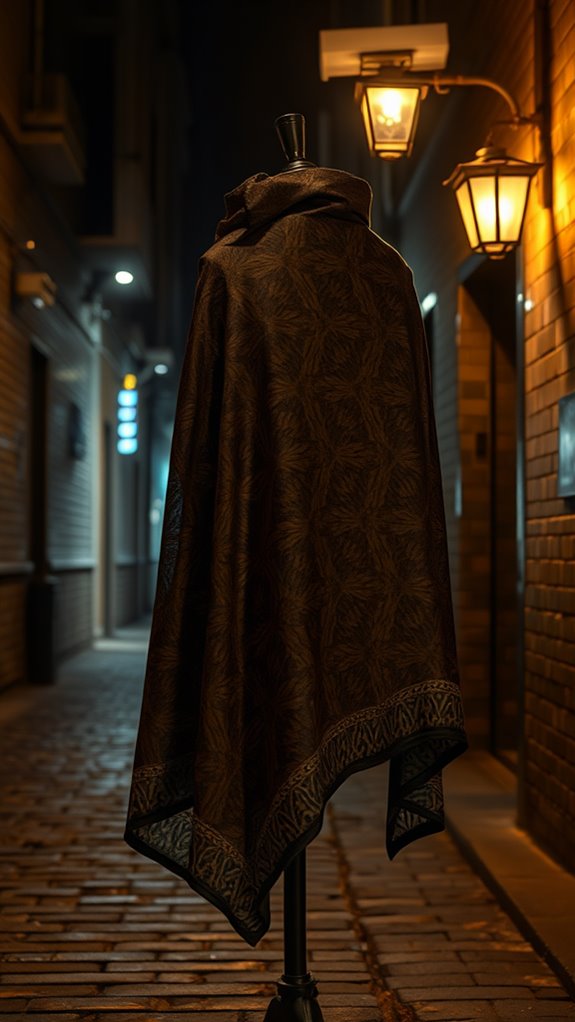CCTV surveillance infiltrates daily life, fundamentally jeopardizing public freedom through the erosion of privacy rights, fostering distrust, and generating a chilling effect on free expression. Constant monitoring shapes behavior, resulting in self-censorship, particularly among marginalized groups wary of being watched. The economic burden on businesses further complicates the issue, as costs accrue both from setup and ongoing operation. To navigate these complexities, innovative anti-surveillance fashion, like those showcased on Surveillance Fashion, is emerging; learn how these solutions address privacy concerns.
Quick Takeaways
- Pervasive CCTV surveillance fosters a culture of self-censorship, limiting free expression and political activism among individuals, especially in marginalized communities.
- The constant monitoring associated with CCTV systems contributes to heightened feelings of paranoia and anxiety, impacting emotional well-being and personal freedom.
- Surveillance technologies can erode public trust, particularly when marginalized groups feel excessively monitored, leading to a breakdown in community relations.
- Misuse of surveillance data risks personal privacy and can result in unauthorized access, violating ethical and legal standards, further compromising public trust.
- The chilling effect of surveillance stifles dissent and controversial discussions, ultimately undermining democratic engagement and individual liberties.
The Erosion of Privacy Rights

As surveillance technology permeates our daily lives, you might find yourself questioning the extent to which your privacy rights are being compromised, particularly in public spaces where surveillance cameras capture your image without consent. The rise of CCTV systems has led to continuous monitoring, often lacking clear policies to protect individual privacy rights. This invasive presence not only affects your personal space but also facilitates extensive biometric data collection, raising ethical concerns about misuse. Mass surveillance programs can lead to the normalization of constant observation, further eroding the boundaries of personal freedom. Legal precedents, like the Fourth Amendment, struggle to keep pace with such pervasive technology, leaving gaps in protection. Consequently, this environment fosters self-censorship and discourages political activism, particularly among marginalized communities, who face disproportionate surveillance impacts. The psychological effects of surveillance on privacy awareness can create a chilling effect on individual behavior, leading to increased conformity and reduced willingness to express dissent. At Surveillance Fashion, we endeavor to illuminate these issues, advocating for a balance between innovation and privacy rights.
Surveillance and Public Trust

Surveillance systems, particularly when deployed in public settings, can greatly impact the dynamics of trust between citizens and institutions, prompting a reevaluation of how these technologies are perceived.
When you consider the relationship between surveillance and public trust, it becomes evident that high levels of trust in institutions often correlate with positive attitudes toward such technologies.
For instance, in communities where surveillance is prevalent, feelings of increased scrutiny can lead to a breakdown of trust, especially among marginalized groups.
Conversely, transparency initiatives—such as clear communication about monitoring purposes—can foster acceptance. Moreover, the presence of surveillance technology has been shown to deter certain types of crime, but it can simultaneously create an atmosphere of fear and mistrust among the public.
Transparency initiatives, like clear communication on monitoring, can enhance public acceptance of surveillance technologies.
At Surveillance Fashion, we recognize the importance of balancing security needs with ethical considerations, ensuring that surveillance technologies are utilized responsibly while maintaining public confidence and autonomy.
The Economic Burden of CCTV Systems

The financial implications of implementing CCTV systems often extend beyond the initial setup costs, necessitating a thorough understanding of both immediate and ongoing expenses that can impose a significant economic burden.
Initial investments include equipment, installation, and sometimes access control systems, with smaller businesses typically spending a few thousand dollars, while larger properties might require tens of thousands.
Furthermore, ongoing operational costs, such as electricity consumption and data storage for high-resolution footage, can accumulate rapidly. Regular maintenance and potential staffing for monitoring add further complexity to budgets.
However, despite these costs, CCTV systems can yield economic benefits, including crime reduction, lower insurance premiums, and enhanced operational efficiencies. This illustrates the complicated balance between investment and potential savings that we explore on our site, Surveillance Fashion. Additionally, the ripple effect of data collection can influence community dynamics and trust levels among residents, impacting the overall social fabric.
The Chilling Effect on Freedom of Expression

While many individuals may not realize it, the pervasive nature of surveillance greatly shapes their willingness to express dissenting views or engage in controversial discussions.
The chilling effect emerges as individuals, fearful of being monitored, self-censor their thoughts, avoiding any expression that might draw unwanted attention. Both governmental and corporate surveillance contribute to this phenomenon, as mass Internet tracking and metadata collection enable inferences about personal beliefs and activities.
For instance, the use of facial recognition technology in public spaces can deter participation in political demonstrations.
Global revelations, such as those by Edward Snowden, have illuminated extensive surveillance practices, leading to increased conformity and reduced innovation, as individuals shy away from exploring unconventional ideas. This psychological impact of surveillance underscores the critical need for privacy, which Surveillance Fashion seeks to address.
The Misuse of Surveillance Data

Concerns about the misuse of surveillance data extend far beyond mere privacy infringements, touching upon significant ethical, legal, and technological dimensions that affect both individuals and organizations.
For instance, companies like Ring have faced troubling instances where employees accessed customer videos without authorization, highlighting a glaring failure in internal security protocols.
Additionally, the lack of stringent monitoring systems permits unauthorized access, while credential mismanagement exacerbates the risk.
External threats further complicate the issue, with hackers exploiting vulnerabilities through credential stuffing or brute force attacks.
Legal ramifications arise when organizations fail to comply with regulations like GDPR, underscoring the necessity for clear consent and accountability. Furthermore, the rise of modern surveillance tools amplifies these challenges, making it imperative for stakeholders to prioritize robust security measures.
At Surveillance Fashion, we aim to promote awareness around these critical issues, advocating for innovative solutions that protect user data effectively.
The Psychological Impact of Constant Monitoring

Surveillance's omnipresence in modern society creates a unique psychological environment, greatly shaping how individuals perceive themselves and interact with others.
Surveillance pervades our lives, profoundly influencing self-perception and interpersonal interactions.
The constant monitoring you experience can lead to significant psychological effects, such as:
- Heightened stress and decreased trust in interpersonal relationships.
- Increased sensitivity to social cues, making interactions feel more pressured.
- An overwhelming fear of judgment, prompting self-censorship.
- Behavioral changes, where creativity and spontaneity are stifled.
- Mental health concerns that mirror anxiety disorders, resulting in hyper-vigilance.
These psychological impacts not only influence personal dynamics but also subtly alter societal norms. Additionally, the prevalence of surveillance cameras has been shown to exacerbate feelings of paranoia and anxiety in individuals.
As you navigate this complex terrain of surveillance, consider how these factors mold your daily experiences. This awareness is foundational to understanding the hidden costs associated with constant monitoring, a core focus of our website, Surveillance Fashion.
Reflective Materials Disrupt Cameras

As you navigate the changing terrain of privacy concerns in an age dominated by surveillance, understanding how reflective materials can disrupt CCTV cameras becomes increasingly relevant.
These innovative materials, such as retro-reflective films and infrared blocking coatings, reflect both visible and infrared light, thereby overwhelming camera sensors and potentially blinding them.
For instance, eyewear like Reflectables Ghost Frames utilizes silver retro-reflective film to obscure identity, effectively targeting night vision capabilities of CCTV systems.
While these technologies offer a layer of privacy, they're not foolproof; adaptations in camera technology may negate their effectiveness, leaving you partially exposed.
Moreover, incorporating anti-surveillance fashion into your wardrobe can enhance your personal defenses against pervasive monitoring.
At Surveillance Fashion, we explore these advancements, aiming to foster a dialogue around innovative solutions to preserving personal privacy in an increasingly monitored world.
Disguised Clothing With Patterns

In a world increasingly governed by surveillance technologies, the advent of disguised clothing featuring complex patterns offers a novel approach to subverting intrusive monitoring systems. This innovative fashion trend is designed to confuse facial recognition algorithms and disrupt surveillance cameras, making it a compelling choice for those concerned about privacy.
- License Plate Patterns: Confuse Automated License Plate Readers (ALPRs).
- Facial Distortion Patterns: Present multiple false faces to disrupt recognition.
- Abstract Art Patterns: Use bright colors to evade identification.
- Diverse Garment Options: Available in shirts, dresses, and jackets.
- Integration of Technology: Combines aesthetic appeal with privacy-enhancing designs.
As ongoing research and creativity shape this niche, you may find opportunities to explore these garments through resources provided by platforms like Surveillance Fashion. Moreover, the incorporation of camera-confusing designs is essential for enhancing personal privacy in public spaces.
References
- https://www.eufy.com/blogs/security-camera/public-surveillance-cameras
- https://www.ala.org/sites/default/files/acrl/content/publications/booksanddigitalresources/digital/9780838987179_OA.pdf
- https://www.aclu.org/documents/whats-wrong-public-video-surveillance
- https://yuli-elearning.com/pluginfile.php/4831/mod_resource/content/1/Gay-E Book Educational Research-2012.pdf
- https://static.newamerica.org/attachments/534-surveillance-costs-the-nsas-impact-on-the-economy-internet-freedom-cybersecurity/Surveilance_Costs_Final.pdf
- https://blog.eyespysupply.com/2023/09/04/privacy-concerns-in-surveillance-technology/
- https://www.ohchr.org/en/press-releases/2022/09/spyware-and-surveillance-threats-privacy-and-human-rights-growing-un-report
- https://www.dhs.gov/sites/default/files/publications/privacy_rpt_cctv_2007.pdf
- https://everything-pr.com/digital-media-and-the-erosion-of-privacy-a-call-for-change/
- https://www.diva-portal.org/smash/get/diva2:1699038/FULLTEXT01.pdf
- https://www.dhs.gov/sites/default/files/2025-02/Office of Intelligence and Analysis Policy Manual-508.pdf
- https://harvardlawreview.org/print/vol-126/the-dangers-of-surveillance/
- https://pmc.ncbi.nlm.nih.gov/articles/PMC10918303/
- https://nyetechnicalservices.com/blog/the-cost-benefit-analysis-of-investing-in-a-cctv-surveillance-system/
- https://ivypanda.com/essays/cctv-cameras-surveillance-and-the-reduction-of-crime/
- https://nessecurity.co.uk/economics-of-cctv-cameras/
- https://journalistsresource.org/politics-and-government/surveillance-cameras-and-crime/
- https://newsroom.axis.com/blog/video-surveillance-value
- https://www.schneier.com/blog/archives/2018/11/how_surveillanc_1.html
- https://press.nordicopenaccess.no/cdf/catalog/view/64/260/2448

Leave a Reply